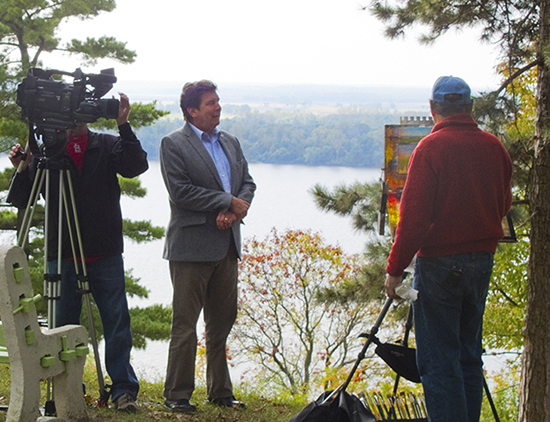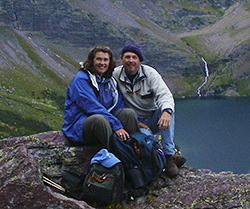An Artist's Tour of Provence - Part IV
Avignon We have made several trips to Avignon and even made it our base of operations on one trip so we could thoroughly scout the town for another painting workshop. Even though it is only about an hour's drive from Aix, it is a full day's excursion, especially so if one wants to see a bit of the nearby wine country of Châteauneuf-du-Pape. We always get an early start. The ancient town of Avignon is now the capital of the Vaucluse departement. Between 1309 and 1377, seven consecutive popes resided in Avignon. It remained in papal control until 1791 when it became a part of France during the French revolution. The historic center of Avignon is one of the few remaining historic towns in France to retain its original ramparts. Inside you will find, the Palais des Papes, the Cathedral and the famous Pont d'Avignon. Avignon was declared a UNESCO World Heritage Site in 1995. It is among the 10 most-visited monuments in France. Check out John's Step-by-Step demonstration painting of Le Pont d'Avignon Here. Take the watchman's walk along the ramparts from the Pont to reach the English-style public garden atop the Rocher des Doms and you'll find a beautiful view over the Rhône plains and Mont Ventoux. This is a natural high spot, some thirty meters above the river. Archaeological studies have revealed human presence since the Neolithic period. Over the centuries the site remained primitive, with very little development. In the 18th century the rock became a popular walking area, appreciated for the beautiful views. In the 1800s, major work was done to make it into a public park—trees and grasses from the former Jardin des Plantes were planted, water pools were created, and several statues were erected. The lovely "Venus aux Hirondelles" makes a striking appearance in the large pool. In 1960 new water reservoirs were built, with the tops turned into terraces which provide magnificent views over the historical city, the Rhône, and the landscapes all the way to Mont Ventoux. One can also reach the garden by taking the escalier Sainte Anne, behind the Palace of the Popes. If walking doesn't appeal, you can take the little tourist train up to the garden. We like to walk up through town, enjoying all the sights and sounds of the street as we make our way up to the top. Of course, if you are carrying a good deal of painting gear, this may not be the best choice to reach the top. The escalier is much more direct in that case. Above, a few of our students are working with John painting the beautiful view out over the Rhône Valley, the vineyards of Châteauneuf-du-Pape, and the distant blue shape of Mont Ventoux. We had a bright overcast Spring day which gave us great even light to paint by. L’ille de Piot
We walked along the Chemin de L’ille de Piot, as the road is called, up to the bridge—Pont Edouard Daladier. Just past the bridge, there is a riverside park with a wide paved walk—the Chemin des Berges—which runs along the river way past the famous Pont d’Avignon. We decided to paint the view from the walk of the Pont in the morning sun. As Ann and I painted, a group of tiny school children approached us from the bridge, all holding hands and singing the famous Pont d’Avignon song. The moment was so perfect we felt that it had all been arranged for our pleasure! After we finished our work, it was back to the bridge to cross into Avignon. The city is still surrounded by its old ramparts or castellated walls, and this gives the impression of a fairytale kind of town with the papal castle sitting proudly at the top, flags waving jauntily in the breeze. We spent the day exploring the city, sampling the crafts and food, and making notes on where we would take our students to paint. We ultimately decided that given the number of students and all their gear, we would set up to teach in the park at the top of the hill on the Rocher des Doms. We would have a great view and lots of space without getting in anyone’s way. Satisfied that we had nailed it, we wandered back down the hill through intriguing passages and alleys to make our way back across the bridge and down the chemin to La Treille. Directions from Aix: Get on A8 from D64, 9 min.(4.9 km).
Châteauneuf-du-Pape The following day our partners arrived, and once they were settled in, we made plans to visit the Châteauneuf-du-Pape area and the famous Mont Redon Winery. The wine region of Châteauneuf-du-Pape lies just to the east of the Rhône and 22 km north of Avignon, about 32 minutes if one drives directly there. During the 70 year Avignon papacy starting in 1308, viticulture in the area was promoted. Today, only the ruins remain of the castle originally built there for Pope John XXI in the 14th century. He was the second pope to live in Avignon. The castle was dismantled for stone after the Revolution, and was later bombed during World War II by Germany. Climb the hill where the ruins are and you will have a 360-degree panorama of the Rhône Valley. As you can see, some of the students elected to paint with John on the patio, while others went on a tour of the Mont Redon winery and settled in comfortably in the tasting room. Their wines are quite wonderful—centuries of learning the terroir and honing their craft have made the winemakers world-class experts. We were interested to find that all the vines have small cobblestones piled up around them - you couldn't even see the soil. The staff there explained that this technique, though very laborious, ensures that the plants can tolerate the very cool nights that the climate often produces in the valley. Their wines are blends of different grapes grown in the area—sometimes as many as nine different grape varieties are combined to make a single wine. It reminded us very much of mixing many colors to get just the right shade. Carcassonne It fell into such disrepair that the French government issued a decree in 1849 to have it demolished. The decree was annulled due to the efforts of J. P. Cros Mayrevielle and the uproar it caused. The architect Eugène Viollet-le-Duc who set the standard for this type of restoration, was originally commissioned to begin the restoration in 1853, and continued to work on it until his death in 1879. The work was not completed until 1910. Today, Carcassonne is world-famous for its medieval fortress and is a UNESCO World Heritage Site.
Carcassonne is another full day excursion, but worth the almost 3 hour drive from Aix. We stopped there on our way from Aix to Domme, located in the region known as the Perigord, six hours away. It turned out to be much more impressive and interesting even than we had heard. Carcassonne is the quintessential medieval castle. So much so, it almost feels like a movie set, but this is no Disney make-believe. It is the real thing. No doubt that many movie castles have been styled based upon it. And to think they almost tore it down. As you arrive, the parking lots are below the castle, which makes it look all the more immense. We can only try to imagine the fear that invading armies must have felt as they tried to lay siege to this monstrously large and dangerously well-defended stronghold. The first place an invader must get through is the deviously constructed set of entrance gates. As we passed a street musician playing an accordion inside the first gate, we couldn't help but notice not only the wonderful light and architecture, but also the dozens of arrow slots and defensive positions above us. Clearly, if you were an attacker caught in here, you had almost no chance! Although we did not have much time that day to paint, we could immediately see the many possible compositions and good subjects that the castle and medieval city inside offered. Light plays wonderfully off of the high castle walls and contrasts with the deeply shadowed streets and alleys. Moving through the tall entrance of the inner walls, one is immediately pressed by the narrow passages of the city streets filled with tourists and jammed with shops. This is not a real village, but a village touristiques, maintained to serve the many visitors who come here. Even so, it oozes authenticity from its cobbled streets to its medieval architecture and cathedral. We were fascinated by it and thoroughly enjoyed our visit there. We only wished we had more time! Plan a full day to enjoy all the sights of Carcassonne - especially the light at dawn and dusk. One could easily spend a week here painting. |
Become an Artist's Road Member Today!
Already a Member?Log in here. To renew your membership, log in and follow the links. Search the SitePerspectivesNot ready to become a Member yet? Subscribe to our free email postcards, "Perspectives". Enter your email address here.
Member ContentFree ContentThe Artist's Road StoreNocturnes - A Primer on Night Painting Filled with inspirational examples by the masters of nightime painting, this little book is sure to fire up your creative energies. Never tried painting at night? We show you how it's done with a step-by-step-oil demo and a tale of night painting in the wilds of Rocky Mountain National Park. The Primer on Night Painting - Nocturnes is a 7 x 7" PDF download with 40 pages of text and images. It includes a gallery of paintings by masters of the nocturne, information to inspire and encourage you in your plein air nocturne painting, an illustrated step-by-step demo and tips for working in pastel and oil. Also available in a softcover edition. Check out the tools and other products that we use in our own art and travels in The Artist's Road Store. We only offer things for sale that we enthusiastically believe in.
About Us
|
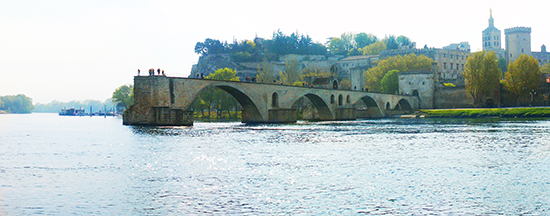
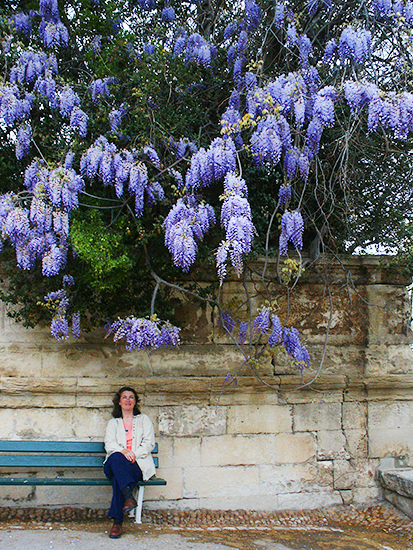 The Palais des Papes with its almost 10 foot thick walls is the biggest Gothic palace in the world. Its over three acres (130,000 sq. feet) of living space equates to the size of 4 Gothic cathedrals. Visitors can see more than 20 rooms in the palace, including the Papal apartments with their priceless frescoes painted by the Italian artist Matteo Giovannetti. The Palace was built in less than twenty years. Begun in 1335, it was primarily built by two popes, Pope Benedict XII and his successor Pope Clement VI and remained the papal seat for 70-odd years. The immense scale testifies to the papacy's wealth.The thick walls, portcullises and watchtowers were built to repel legions of repeated assaults.
The Palais des Papes with its almost 10 foot thick walls is the biggest Gothic palace in the world. Its over three acres (130,000 sq. feet) of living space equates to the size of 4 Gothic cathedrals. Visitors can see more than 20 rooms in the palace, including the Papal apartments with their priceless frescoes painted by the Italian artist Matteo Giovannetti. The Palace was built in less than twenty years. Begun in 1335, it was primarily built by two popes, Pope Benedict XII and his successor Pope Clement VI and remained the papal seat for 70-odd years. The immense scale testifies to the papacy's wealth.The thick walls, portcullises and watchtowers were built to repel legions of repeated assaults.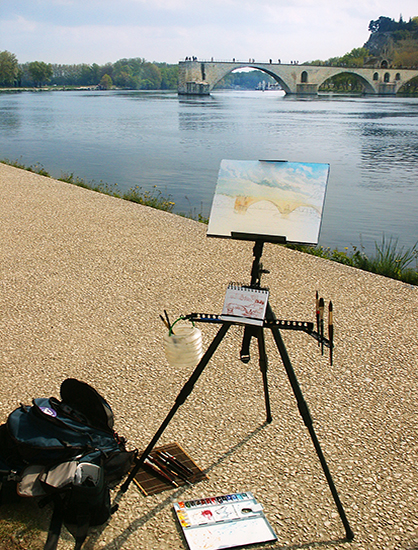 The Pont Saint Bénézet (also known as the Pont d'Avignon) partially spans the Rhône at Avignon. Only four arches (out of the initial 22) now remain. A previous bridge was built between 1171 and 1185, with a length of some 900 m (2950 ft), but was destroyed during the siege of Avignon by Louis VIII of France in 1226. It was rebuilt but suffered frequent collapses during floods and had to be continually repaired. Several arches were already missing (and spanned by wooden sections) before the remainder was abandoned in 1669, leaving the partial bridge we see today. The famous song, "Sur le Pont d'Avignon" dates to the 15th century:
The Pont Saint Bénézet (also known as the Pont d'Avignon) partially spans the Rhône at Avignon. Only four arches (out of the initial 22) now remain. A previous bridge was built between 1171 and 1185, with a length of some 900 m (2950 ft), but was destroyed during the siege of Avignon by Louis VIII of France in 1226. It was rebuilt but suffered frequent collapses during floods and had to be continually repaired. Several arches were already missing (and spanned by wooden sections) before the remainder was abandoned in 1669, leaving the partial bridge we see today. The famous song, "Sur le Pont d'Avignon" dates to the 15th century: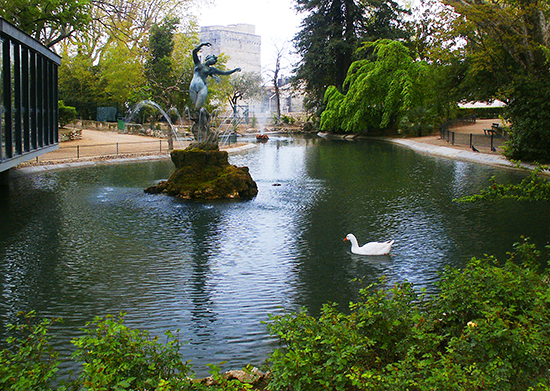
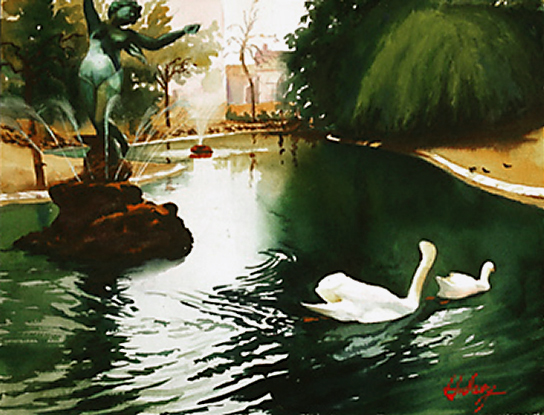
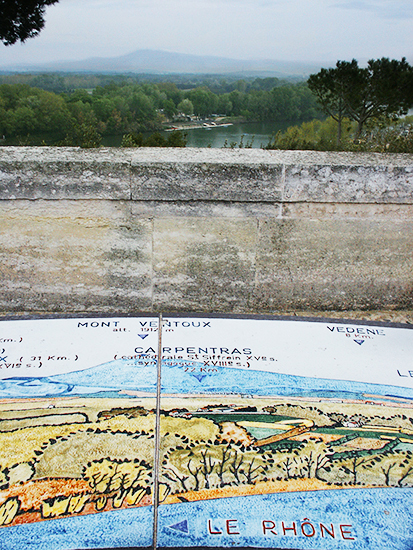
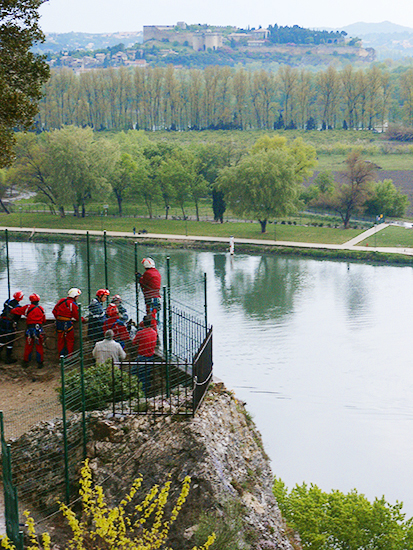
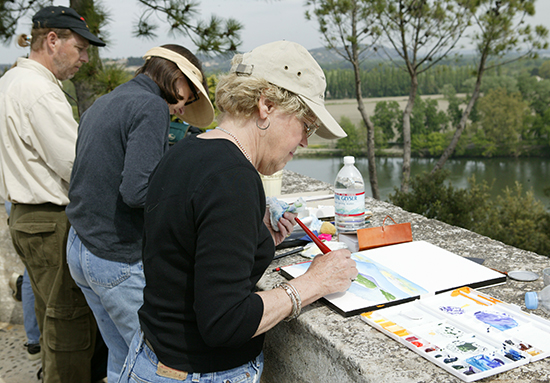
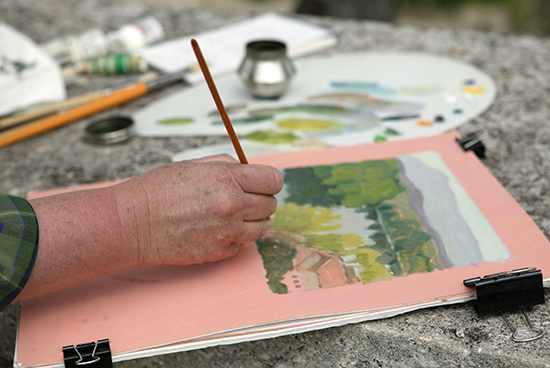
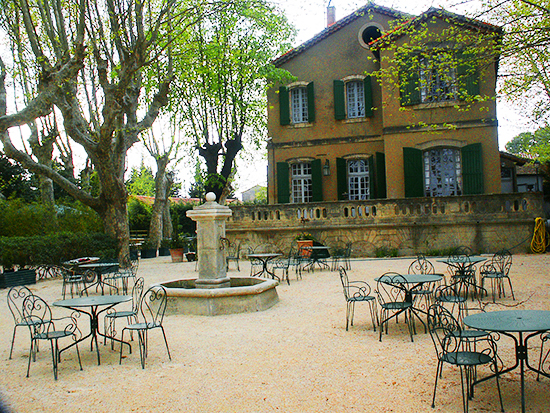
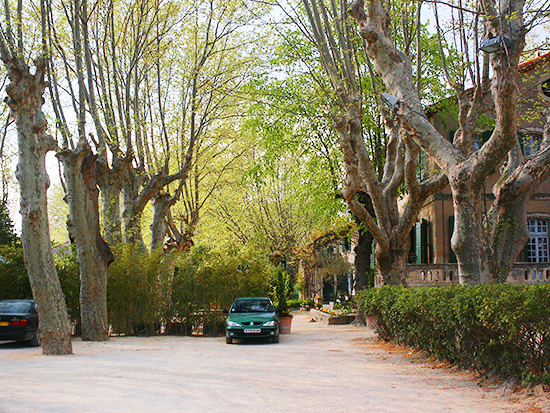
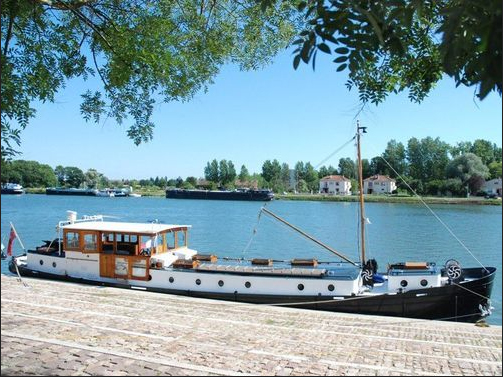 The next day, jet lag mostly conquered, we grabbed our portable painting gear and walked out of the hotel toward the only road which runs along the river toward Avignon. Anchored all along the shore were large live-in barges, called bateaux mouches. People were living there, anchored across from Avignon, using bicycles to get around town. It looked like a delightful way to live, situated in the heart of wine country, if only for a while, and we made a mental note to try a barge trip some day.
The next day, jet lag mostly conquered, we grabbed our portable painting gear and walked out of the hotel toward the only road which runs along the river toward Avignon. Anchored all along the shore were large live-in barges, called bateaux mouches. People were living there, anchored across from Avignon, using bicycles to get around town. It looked like a delightful way to live, situated in the heart of wine country, if only for a while, and we made a mental note to try a barge trip some day.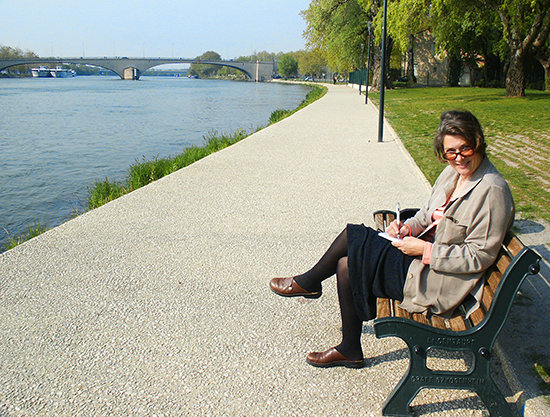
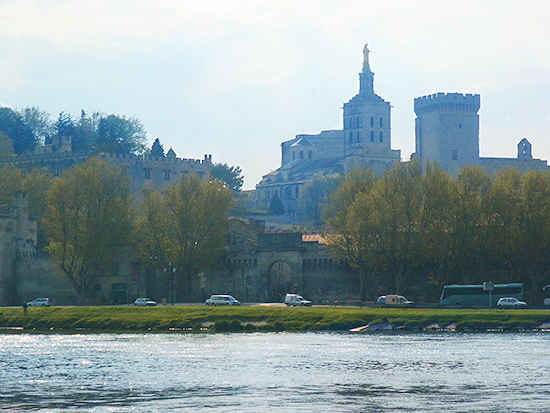
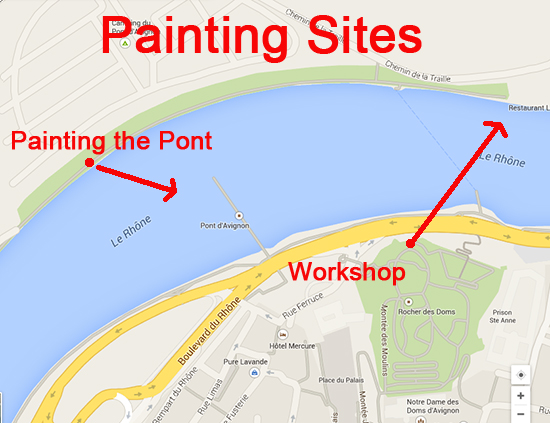
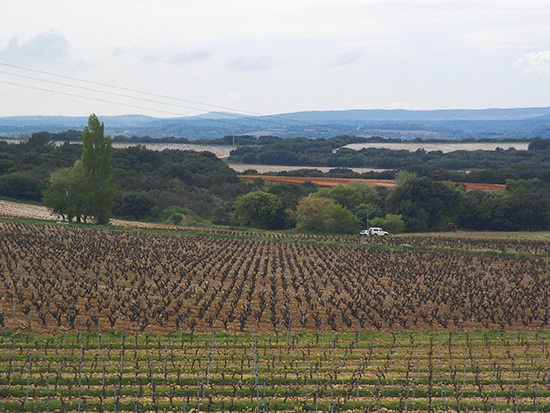
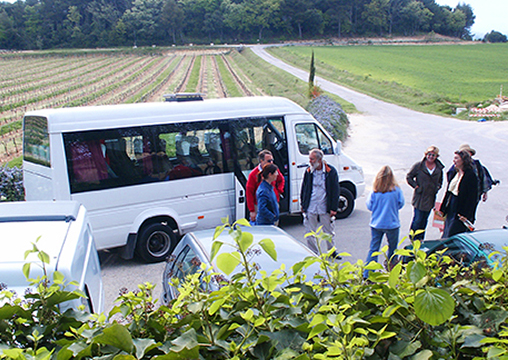
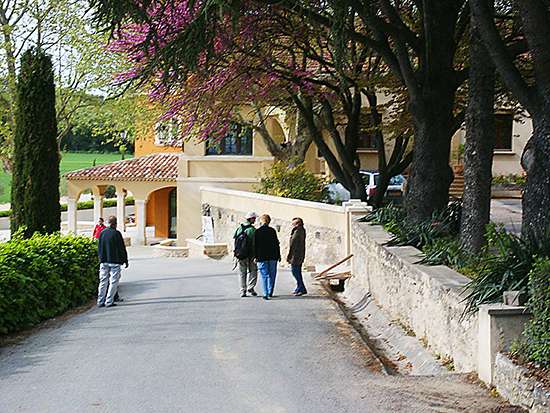
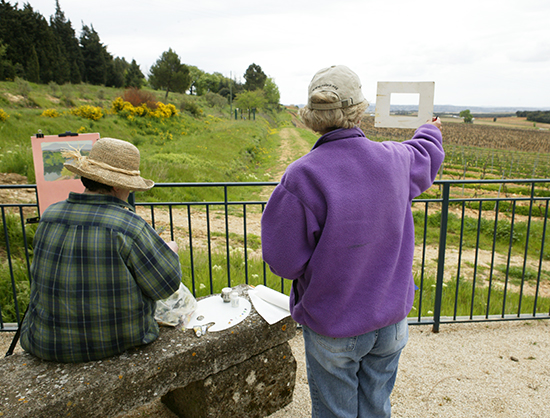
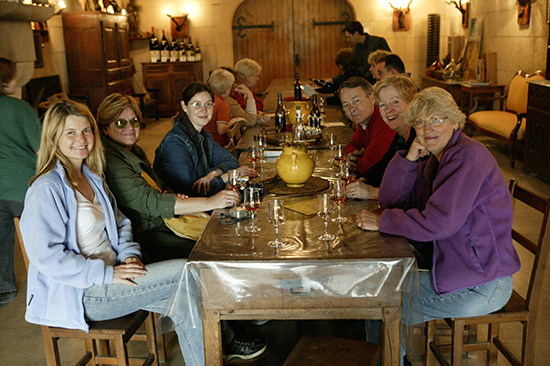
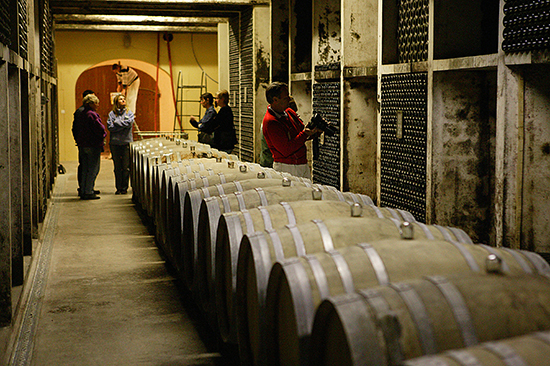
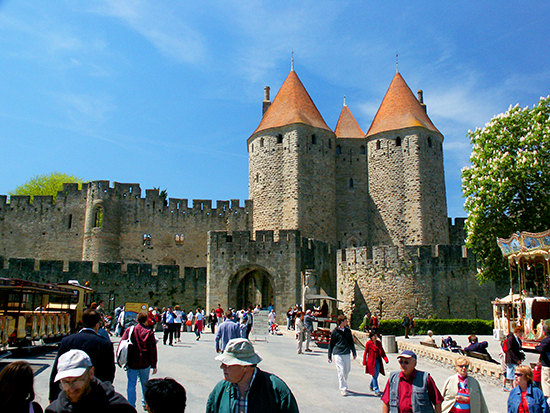
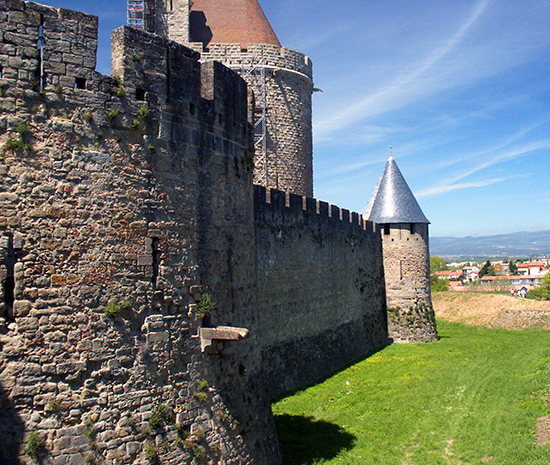
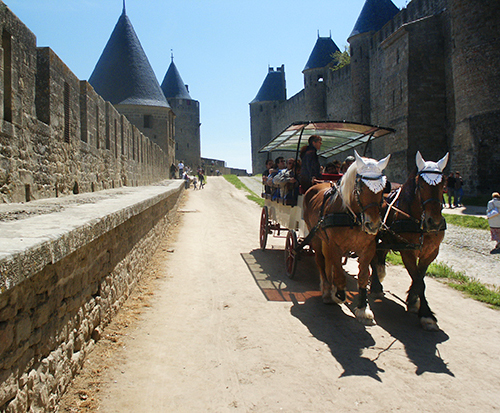
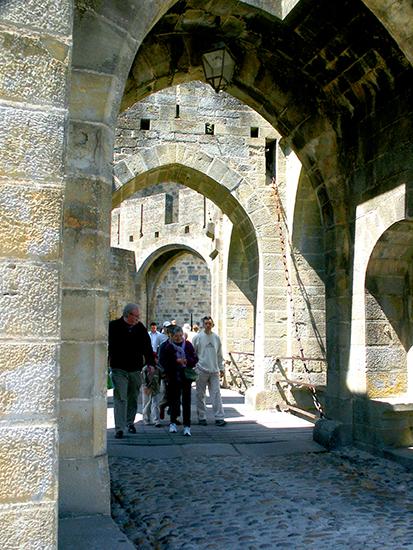
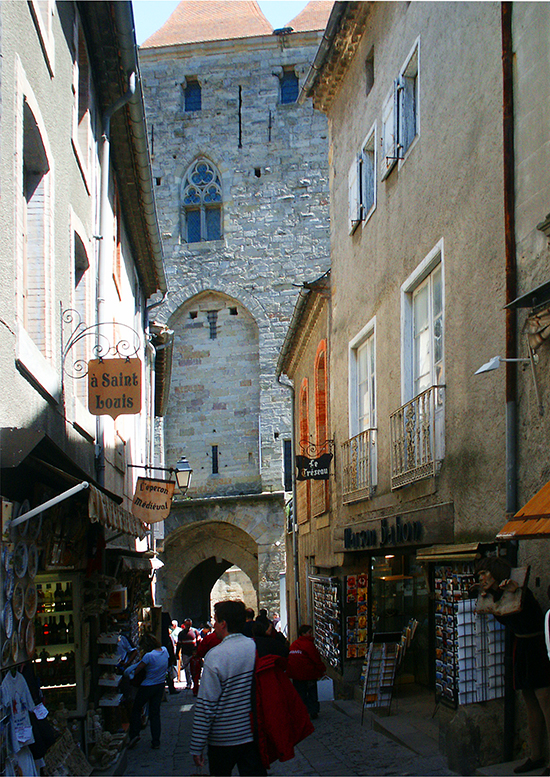
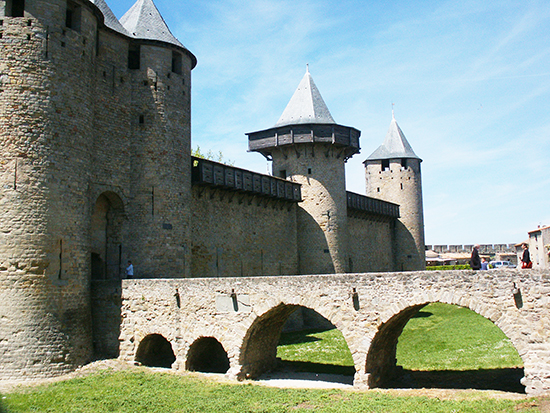
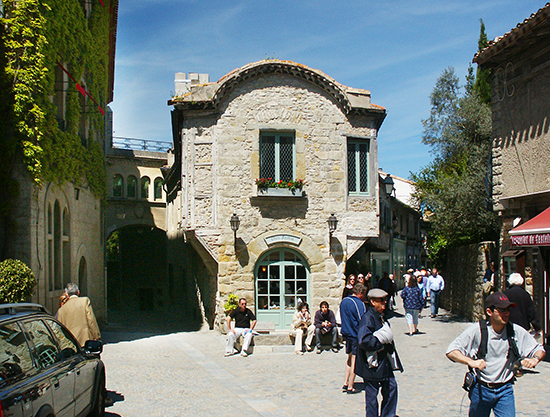
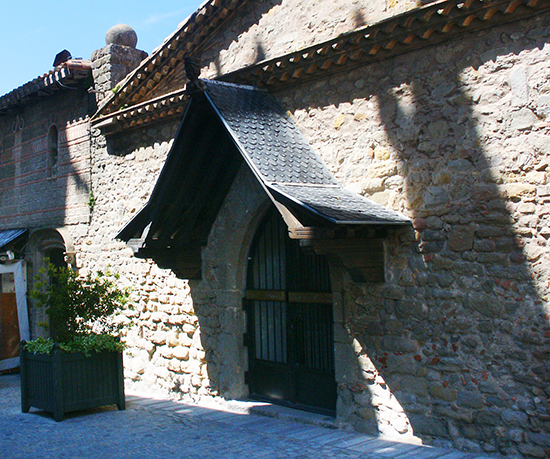
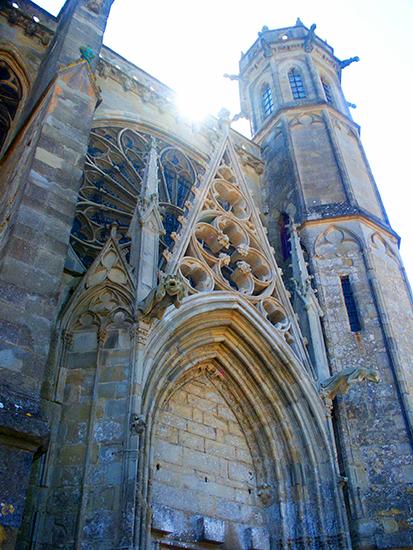
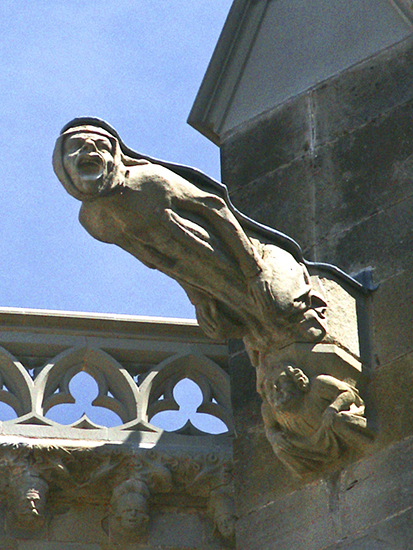
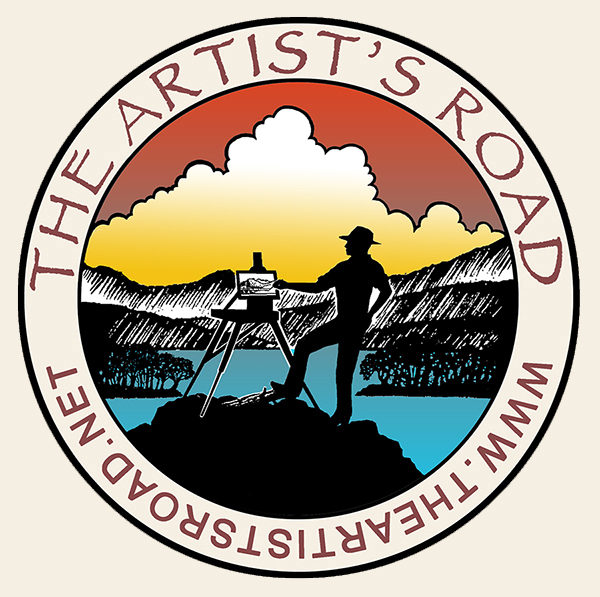
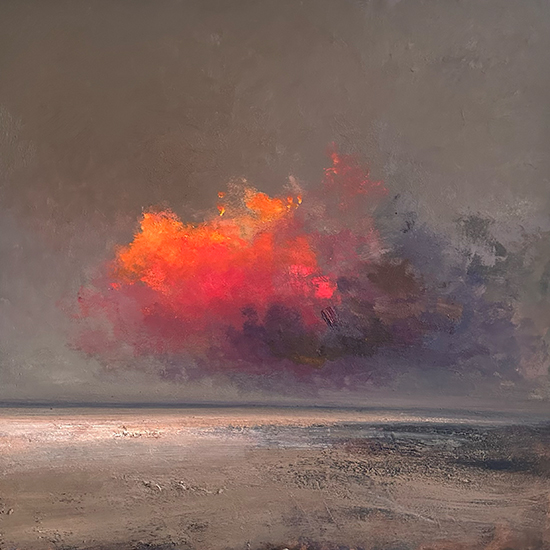 Voices of Experience:Richard K. Blades
Voices of Experience:Richard K. Blades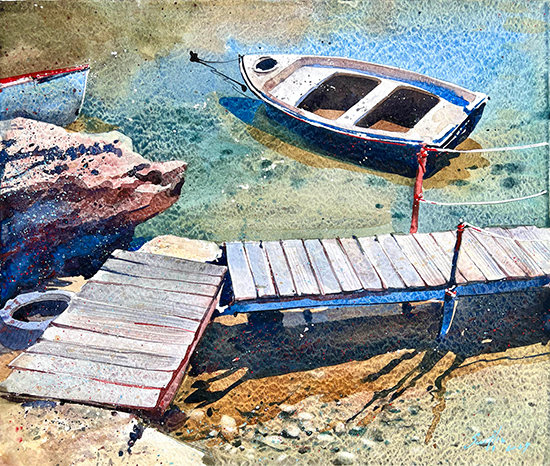
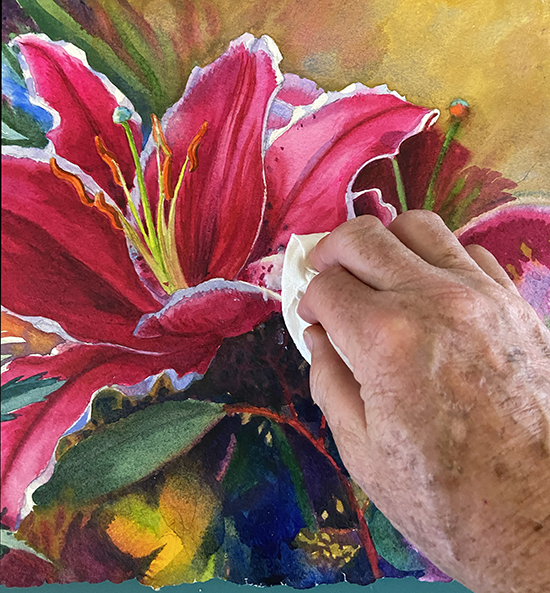 ing Watercolors
ing Watercolors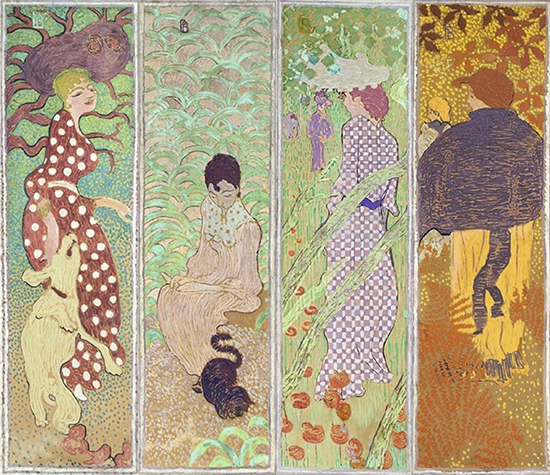
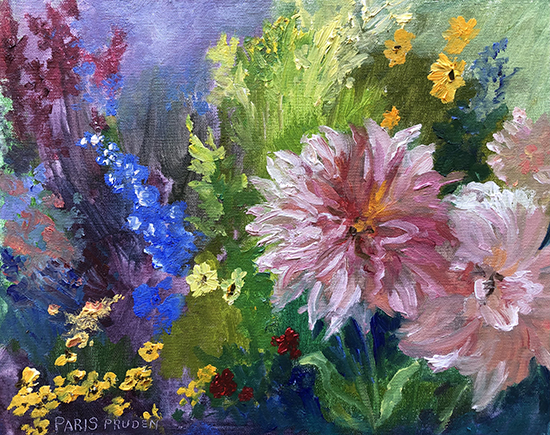
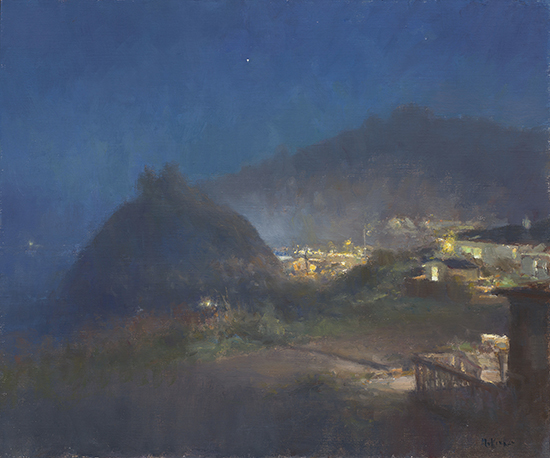 Nocturne Notes
Nocturne Notes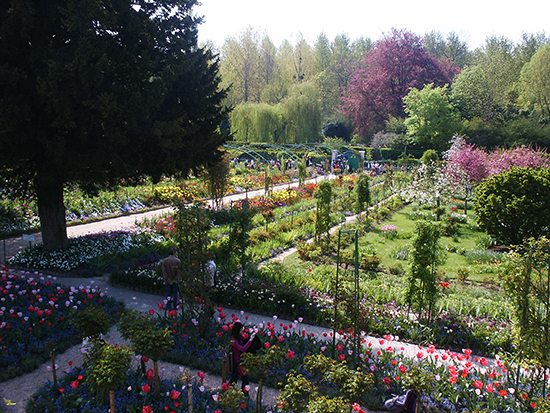 Inspiration in Monet's Gardens
Inspiration in Monet's Gardens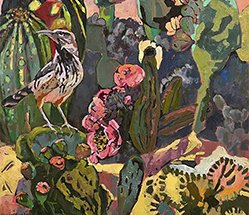
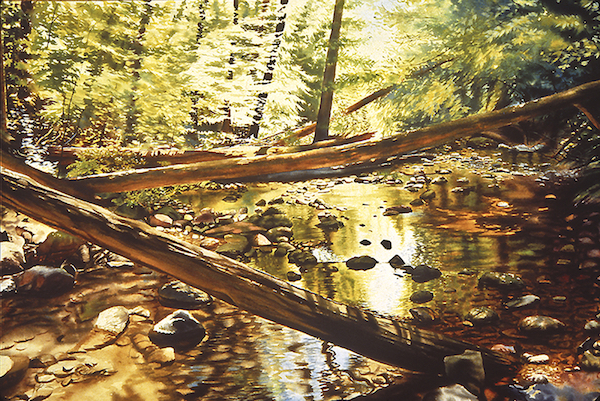 The Watercolor Medium
The Watercolor Medium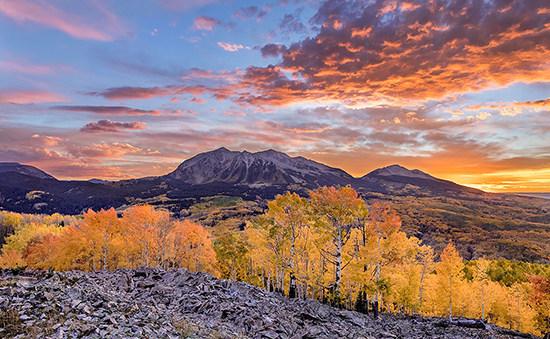
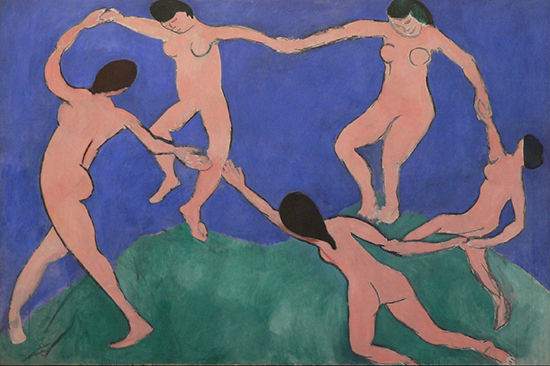 The Perspectives Archive
The Perspectives Archive